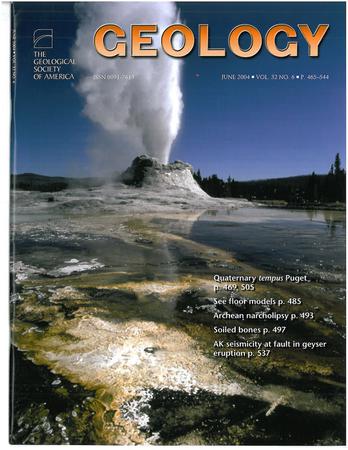The unexpected global distribution of Earth’s sediment sources and sinks
IF 4.6
1区 地球科学
Q1 GEOLOGY
引用次数: 0
Abstract
Earth’s landscapes, geochemical cycles, and sedimentary record are shaped by the source-to-sink transport of sediment. Sediment is sourced in erosional landscapes under the influence of climate and tectonics, transported through net bypass zones that can obscure forcing signals, and deposited in sinks to build the sedimentary record. Despite the importance of source-to-sink sediment transport in Earth science, the relative abundance of these domains remains unquantified, and the extent to which Earth’s surface resembles classic conceptual models has not been tested. Here we produce a global database of Earth’s source-to-sink systems. Results show that Earth’s land area is mostly erosional (59%), with bypass (22%) and sink (19%) domains less common (18%, 6%, and 76%, respectively, including oceans and Antarctica). Higher elevations are likelier to be erosional, with the world’s lowlands and large rivers disproportionately depositional. Large parts of the world are not described by the source-to-sink model; these areas are mostly deserts or shields without substantial rivers or sediment transport. Even in areas that do resemble the classic textbook progression, systems show exceptional source-to-sink domain variability between catchments and down the world’s major rivers. While the source-to-sink paradigm remains useful, it cannot describe the sedimentologically inactive areas that make up much of the world.地球沉积物源和汇的全球分布出乎意料
地球的景观、地球化学循环和沉积记录都是由沉积物从源到汇的运输形成的。沉积物来源于受气候和构造影响的侵蚀地貌,通过可以模糊强迫信号的净绕道带运输,并沉积在汇中以建立沉积记录。尽管在地球科学中,从源到汇的沉积物运输具有重要意义,但这些区域的相对丰度仍未量化,而且地球表面与经典概念模型的相似程度尚未得到检验。在这里,我们制作了一个地球源到汇系统的全球数据库。结果表明,地球陆地面积主要是侵蚀区(59%),旁路区(22%)和汇区(19%)较少(分别为18%、6%和76%,包括海洋和南极洲)。高海拔地区更容易受到侵蚀,世界上的低地和大河不成比例地受到沉积作用。世界上的大部分地区没有被源到汇模型所描述;这些地区大多是沙漠或盾牌,没有大量的河流或沉积物运输。即使在那些确实类似于经典教科书进展的地区,在集水区和世界主要河流下游之间,系统也显示出异常的源-汇域变化。虽然“源-汇”模式仍然有用,但它无法描述构成世界大部分地区的沉积学不活跃地区。
本文章由计算机程序翻译,如有差异,请以英文原文为准。
求助全文
约1分钟内获得全文
求助全文
来源期刊

Geology
地学-地质学
CiteScore
10.00
自引率
3.40%
发文量
228
审稿时长
6.2 months
期刊介绍:
Published since 1973, Geology features rapid publication of about 23 refereed short (four-page) papers each month. Articles cover all earth-science disciplines and include new investigations and provocative topics. Professional geologists and university-level students in the earth sciences use this widely read journal to keep up with scientific research trends. The online forum section facilitates author-reader dialog. Includes color and occasional large-format illustrations on oversized loose inserts.
 求助内容:
求助内容: 应助结果提醒方式:
应助结果提醒方式:


